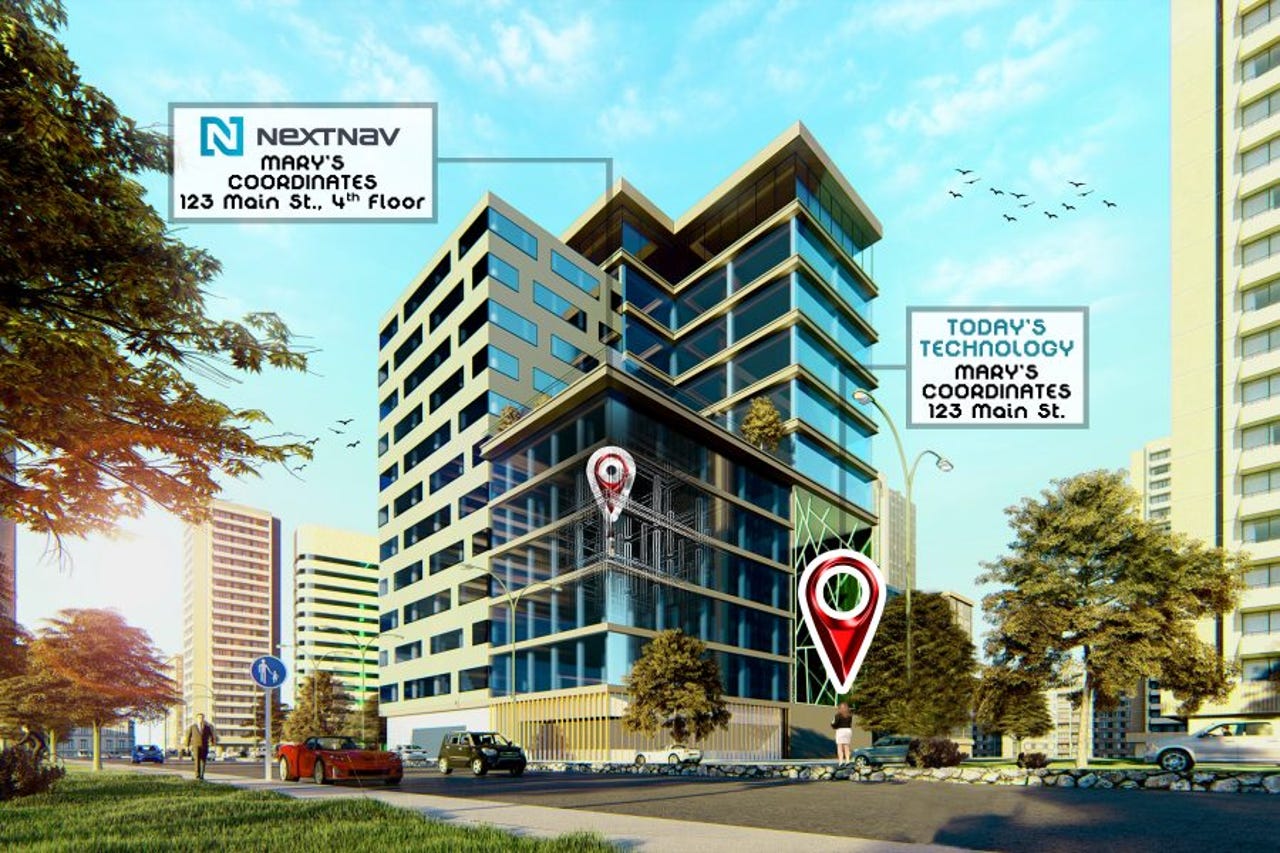































 NextNav
NextNav More than 80% of Americans live in cities, and many reside in multistory buildings. That makes tracking 911 callers by floor number critical in limiting emergency services response times.
Next gen GPS is becoming a crucial link in the chain of response, and a new partnership between a terrestrial GPS developer and a location services provider points the way to how this technology is being utilized by emergency services.
It all starts with strict regulation. The FCC recently issued requirements that a 911 caller's vertical location must be determined within 3m accuracy at least 80% of the time. Geographic Information System (GIS) data is becoming increasingly robust via wireless communications, but positioning measurements still introduce significant errors.
A next gen GPS company called NextNav boasts a solution exceeding the FCC requirement, delivering accuracy around 3m 94% of the time according to independent tests. The solution leverages the barometric sensors already available in phones, tablets, and many other devices to deliver "floor-level" altitude measurements which exceed the FCC mandate for 3m accuracy.
NextNav has teamed up with location services company GeoComm to offer an emergency response solution that helps responders locate callers more effectively in multi-story environments. Using local GIS data and building information, GeoComm systems can convert raw positioning measurements received from wireless carriers into dispatchable locations including, but not limited to, building name, street address, and sub-address elements such as floor and room number. Through the partnership with NextNav, GeoComm systems are also enabled with the ability to make indoor tactical mapping displays
"9-1-1 positioning technology is moving indoors," says John Brosowsky, Vice President of Innovation at GeoComm. "Thanks to the hard work of many in the industry we are now witnessing a convergence of regulation, enforcement, legislation, standards, and technology enabling accurate positioning of emergency callers and responders indoors. But without an indoor map, a highly accurate and precise indoor position is little more than a blue dot on an otherwise blank whiteboard."
Interestingly, urban environments are typically at a disadvantage when it comes to traditional location services, most prominently space-based GPS. Indoor spaces in particular, including office buildings and arenas, tend to obscure signals from satellite arrays. In addition to its vertical positioning technology, NextNav delivers positioning, navigation, and timing services where GPS can't via its network of terrestrial transmitters deployed around a service area to triangulate against a device's location, much like a GPS satellite array. Unlike national space-based systems, however, the proximity of NextNav's terrestrial transmitters makes the signal strength 100,000 times that of GPS.
"Bringing vertical location capabilities to the Public Safety ecosystem will expedite our industry's ongoing transformation to a next generation 9-1-1 (NG9-1-1) end state, and as a result, help save lives," says Dan Hight, VP of Business Development and Partnerships. "With NextNav's Pinnacle service and through partnerships with leaders in the industry like GeoComm, agencies gain precise vertical location intelligence that can be easily provided to PSAPs without the need for an additional pane of glass."
 Tags quentes :
Negócio
Cidades Inteligentes
Tags quentes :
Negócio
Cidades Inteligentes